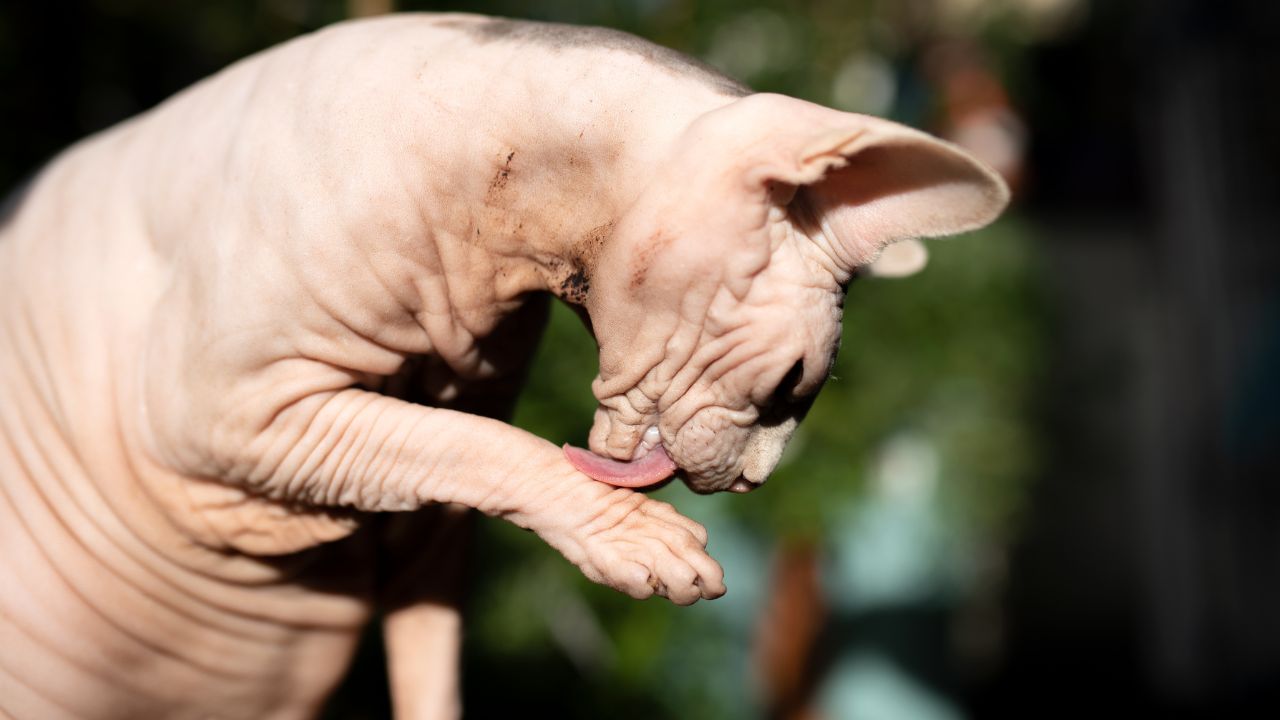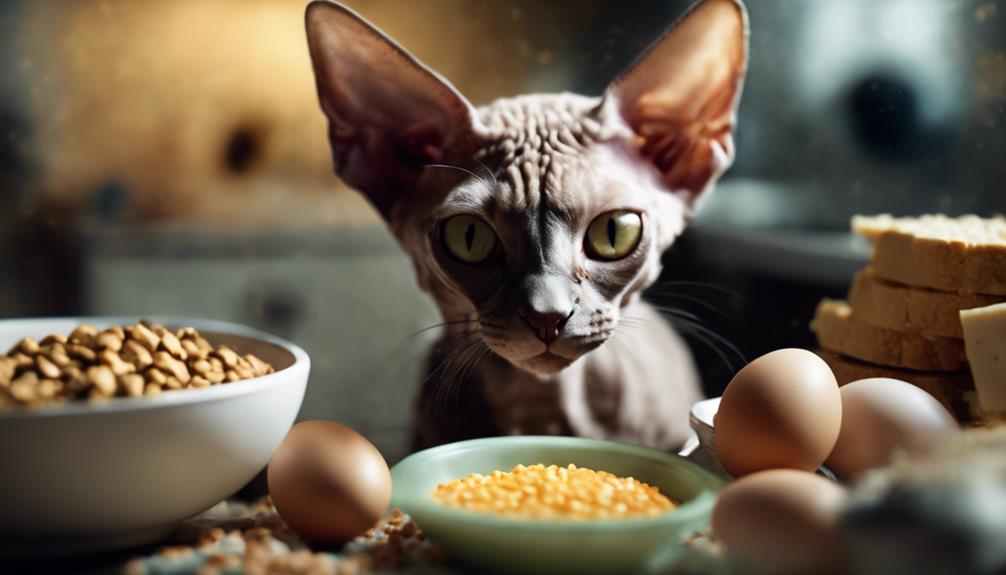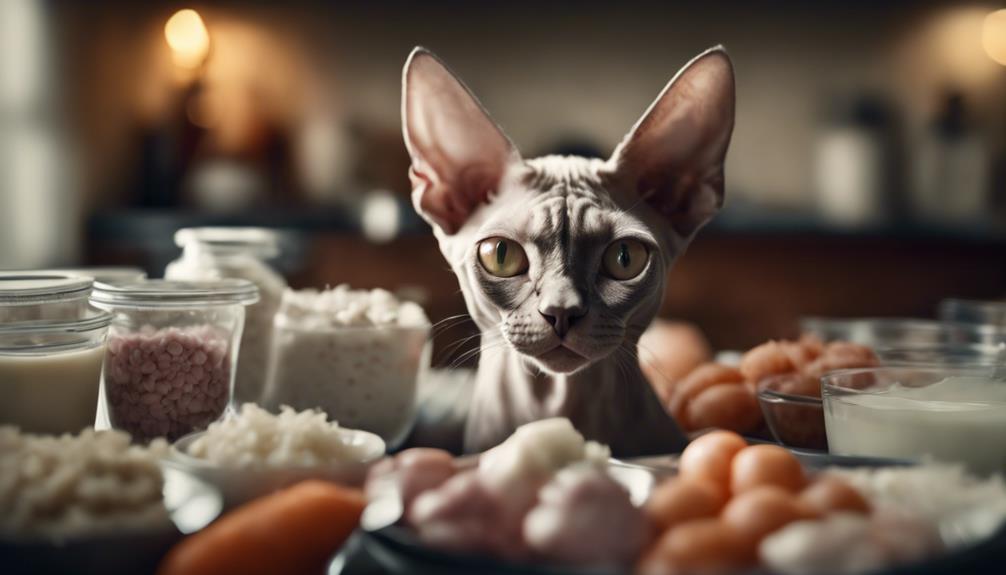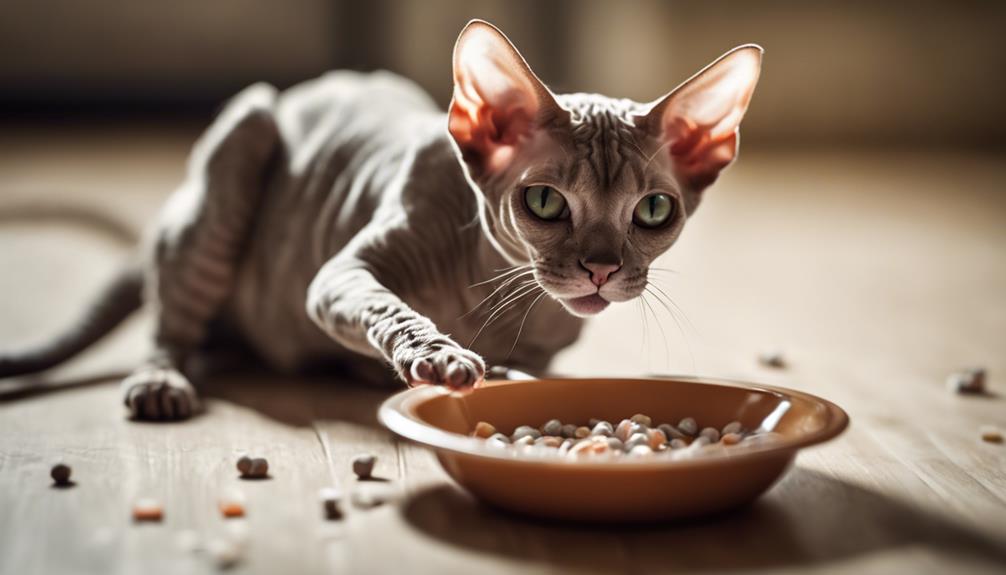Are you a cat lover who is always on the lookout for unique and unusual feline breeds? Have you ever considered hairless cats? While they may not be everyone’s cup of tea, hairless cats have their own unique charm and personality that can win over even the most skeptical cat lover. In this article, we will introduce you to a list of hairless cat breeds you never knew existed!
The most well-known hairless cat breed is the Sphynx, which originated in Canada in the 1960s. However, there are several other hairless cat breeds that are just as fascinating. For example, have you ever heard of the Peterbald or the Donskoy? These Russian breeds are becoming increasingly popular due to their unique appearance and affectionate personality.
If you’re looking for a hairless cat breed that’s a little more exotic, you might want to consider the Elf Cat or the Minskin. These breeds are the result of careful breeding and genetic manipulation, resulting in a cat that looks like it stepped out of a fantasy novel. Whether you’re a fan of traditional hairless breeds like the Sphynx or prefer something a little more out of the ordinary, there’s a hairless cat breed out there for everyone.
What are Hairless Cats?
Hairless cats, as the name suggests, are a type of feline that lacks fur or has very little hair. They are often referred to as “naked cats” or “nudist cats.” While hairless cats may look unusual to some people, they are becoming increasingly popular as pets.
The Absence of Fur
Hairless cats lack the fur that is typical of most cat breeds. This can make them feel different to the touch and may require their owners to take extra care to protect them from the elements. However, hairless cats are not completely bald. They may have a short coat of peach fuzz-like hair or a thin layer of fur on certain parts of their body, such as their paws, tail, and ears.
Genetic Mutations
The absence of fur in hairless cats is due to a genetic mutation. Different hairless cat breeds have different genetic mutations that cause their lack of fur. For example, the Sphynx cat breed has a recessive gene that causes their hairlessness. Other hairless cat breeds, such as the Donskoy and the Ukrainian Levkoy, have different genetic mutations that cause their hairlessness.
It’s important to note that hairless cats are not the result of human manipulation or genetic engineering. They are a natural variation of the feline species that has been around for centuries.
In conclusion, hairless cats are a unique and interesting type of feline that lack fur due to genetic mutations. While they may require special care and attention, they make great pets for those who are willing to provide them with the love and care they need.
Different Hairless Cat Breeds
If you’re looking for a unique and unusual pet, a hairless cat breed might be just what you need. Here are some of the most popular hairless cat breeds you might not have heard of:
Sphynx
The Sphynx is one of the most well-known hairless cat breeds. These cats are friendly, outgoing, and love to be around people. They are also very active and playful, making them great companions for families with children.
Elf Cat
The Elf Cat is a relatively new breed that was developed by crossing the Sphynx with the American Curl. These cats have a unique appearance, with curled ears and a hairless body. They are friendly and affectionate, and love to cuddle with their owners.
Peterbald
The Peterbald is a breed that was developed in Russia in the 1990s. These cats have a slender, elegant appearance and come in a variety of colors and patterns. They are intelligent and curious, and love to explore their surroundings.
Donskoy
The Donskoy is another hairless cat breed that originated in Russia. These cats have a unique appearance, with wrinkled skin and large ears. They are friendly and affectionate, and love to be around their owners.
Bambino
The Bambino is a breed that was developed by crossing the Sphynx with the Munchkin. These cats have short legs and a hairless body, giving them a unique appearance. They are friendly and outgoing, and love to be around people.
Levkoy
The Levkoy is a breed that was developed in Ukraine in the early 2000s. These cats have a unique appearance, with folded ears and a hairless body. They are friendly and outgoing, and love to be around their owners.
Minskin
The Minskin is a breed that was developed by crossing the Sphynx with the Munchkin and the Devon Rex. These cats have short legs, a hairless body, and curly fur on their ears, nose, and paws. They are friendly and affectionate, and love to be around people.
Lykoi
The Lykoi is a breed that is sometimes called the “werewolf cat” because of its unique appearance. These cats have a sparse, wiry coat that gives them a wild, wolf-like appearance. They are friendly and affectionate, and love to be around people.
Overall, hairless cat breeds can make great pets for the right owner. They are unique, affectionate, and full of personality. If you’re considering getting a hairless cat, be sure to do your research and find a breed that suits your lifestyle and personality.
Characteristics of Hairless Cats
Hairless cats are a unique and fascinating breed. They have a distinct appearance and require special care. Here are some important characteristics to consider before adopting a hairless cat.
Grooming
Hairless cats require regular grooming to keep their skin healthy and clean. They do not have fur to absorb oils, and their skin can become oily and prone to acne. Regular baths with a gentle shampoo can help keep their skin clean and healthy.
Additionally, hairless cats may need their nails trimmed more frequently than other cats. Their nails can grow longer and sharper due to the lack of friction from fur.
Health
Hairless cats are generally healthy and can live long lives. However, they may be more susceptible to certain health issues such as sunburn, skin infections, and respiratory problems. It is important to keep them indoors and provide them with plenty of shade and protection from the sun.
Additionally, hairless cats may be more sensitive to temperature changes and require extra warmth in cooler temperatures.
Care
Hairless cats require special care due to their lack of fur. They may need to wear clothing or have access to warm blankets to help regulate their body temperature. It is important to provide them with a balanced diet and plenty of clean water.
Hairless cats also require regular vet check-ups to ensure their health and well-being.
Special Attention
Hairless cats may require special attention due to their unique appearance and personality. They are often friendly, intelligent, and playful, but may also be more sensitive and require extra attention and affection.
It is important to socialize hairless cats from a young age to help them develop a strong bond with their owners and other pets.
In summary, hairless cats are a unique and fascinating breed that require special care and attention. Regular grooming, proper health care, and special attention can help ensure their health and well-being.
Hypoallergenic Qualities
If you’re someone who is allergic to cats but still wants to have one as a pet, you may be interested in hairless cat breeds. Hairless cats, such as the Sphynx, are often considered hypoallergenic because they produce less dander than cats with fur. However, it’s important to note that hypoallergenic doesn’t mean completely allergen-free. Some people may still experience allergies to hairless cats, but the symptoms may not be as severe.
Here are some hypoallergenic qualities of hairless cat breeds:
- Less shedding: Hairless cats don’t shed as much as cats with fur, which means there will be less dander in your home.
- Less grooming: Hairless cats don’t require as much grooming as cats with fur, which means there will be less dander in the air when you’re grooming them.
- Lower levels of Fel d 1 protein: This protein is found in a cat’s skin, saliva, and urine, and is a common allergen for people. Hairless cats produce less of this protein than cats with fur, which makes them less likely to cause allergic reactions.
- Frequent bathing: Hairless cats require more frequent baths than cats with fur to keep their skin clean and free of oils, which can be a source of allergens.
It’s important to note that while hairless cats may be hypoallergenic for some people, they may not be for others. If you’re considering getting a hairless cat and you have allergies, it’s a good idea to spend some time around them before making a decision. You can also talk to your doctor about allergy medication or other options to help manage your symptoms.

Price and Availability
Hairless cats are a unique and rare breed, which means they can be quite expensive. The cost of a hairless cat can vary depending on the breed and your location, but on average, they can range from $1500 to $3000. However, it’s important to note that the price can be much higher for some of the rarer breeds.
When it comes to availability, hairless cats are not as common as other breeds. Some of the more popular breeds, such as the Sphynx and the Peterbald, can be found with relative ease, but other breeds may be harder to come by. It’s important to do your research and find a reputable breeder to ensure that you’re getting a healthy and well-cared-for cat.
If you’re not set on a specific breed, you may want to consider adopting a hairless cat. There are many rescue organizations that specialize in hairless cats, and you may be able to find a loving companion at a lower cost than purchasing from a breeder.
It’s also important to consider the ongoing costs of owning a hairless cat. Because they have little to no fur, they may require more maintenance than other breeds. This can include regular baths to keep their skin clean and moisturized, as well as special diets to ensure they’re getting the nutrients they need. Be sure to factor in these additional costs when budgeting for a hairless cat.
In summary, hairless cats can be a unique and rewarding addition to your family, but they come with a higher price tag than many other breeds. Do your research and consider all the costs before making a decision.
Living with Hairless Cats
If you’re considering adopting a hairless cat, there are a few things you should know to ensure they live a healthy and happy life. Here are some tips for living with hairless cats:
Indoor Pets
Hairless cats are indoor pets and should never be left outside, as they are prone to sunburn and hypothermia. They also have a higher risk of being stolen due to their unique appearance.
Sunburn
Hairless cats are susceptible to sunburn and skin damage, so it’s important to keep them out of direct sunlight. If you do take your cat outside, apply a pet-safe sunscreen to their skin to prevent sunburn.
Cold
Hairless cats are sensitive to cold temperatures and should be kept in a warm environment. You may need to provide additional heating during the winter months to keep them comfortable.
Cat Food
Hairless cats have a higher metabolism than other cats and require a diet high in protein and fat. Look for cat food that is specifically formulated for hairless cats or consult with your veterinarian for recommendations.
Sweater
Hairless cats may need to wear a sweater or other clothing to stay warm, especially during the winter months. Look for clothing specifically designed for hairless cats or consider making your own.
Sun Lotion
If you take your hairless cat outside, you should apply a pet-safe sunscreen to their skin to prevent sunburn. Look for a sunscreen that is specifically formulated for pets and avoid using human sunscreen as it may be toxic to your cat.
Living with hairless cats can be a unique and rewarding experience, but it’s important to take proper care of them to ensure they stay healthy and happy. By following these tips, you can provide your hairless cat with a safe and comfortable environment.
Breeding Hairless Cats
Breeding hairless cats is a fascinating process that has led to the creation of several unique breeds. Hairless cats are the result of a genetic mutation that causes them to be born without fur. Over time, breeders have worked to develop these cats into distinct breeds with their own unique characteristics.
Recessive
Hairlessness is a recessive trait, which means that both parents must carry the gene for it to be expressed in their offspring. If only one parent carries the gene, their offspring will not be hairless, but may still carry the gene and pass it on to their own offspring.
Genetic Mutations
The most well-known hairless cat breed is the Sphynx, which originated in Canada in the 1960s. The Sphynx was developed through crossbreeding with shorthair cats to create a healthy, broad gene pool. Other hairless cat breeds, such as the Peterbald and the Donskoy, have also been developed through genetic mutations and selective breeding.
Recent Breed
One of the most recent hairless cat breeds is the Ukrainian Levkoy. Although not yet recognized by international cat fancier and breeder organizations, they are beloved by clubs in Russia and Ukraine. Their appearance is fascinating, with inward-folding ears, wrinkled and soft skin, and long, elegant bodies.
Breeding hairless cats requires careful consideration and attention to detail. Breeders must work to maintain genetic diversity and avoid inbreeding, which can lead to health problems in the offspring. With careful breeding practices, hairless cats can continue to be developed into unique and fascinating breeds that are beloved by cat lovers around the world.
Famous Hairless Cats
Hairless cats may not be as popular as their furry counterparts, but they have still managed to make their mark in pop culture. Here are some famous hairless cats that you may have heard of:
Bastet
Bastet is an ancient Egyptian goddess who was often depicted as a cat. She was associated with fertility, motherhood, and protection. In some depictions, she was shown as a hairless cat. The ancient Egyptians considered cats to be sacred animals, and they believed that they brought good luck and protected their homes from evil spirits.
In modern times, the name Bastet has been given to a breed of hairless cats. These cats are similar in appearance to the Sphynx, but they have a longer snout and a more athletic build. They are known for their affectionate and playful personalities, and they make great pets for families with children.
If you’re interested in learning more about the Bastet breed, check out this table:
| Breed | Characteristics |
|---|---|
| Bastet | Hairless, athletic build, long snout, affectionate, playful |
Overall, hairless cats may not be as common as their furry counterparts, but they are still beloved by many. Whether you’re looking for a playful and affectionate pet or a unique addition to your family, a hairless cat may be just what you need.
Conclusion
In conclusion, hairless cats are unique and fascinating creatures that have captivated the hearts of many cat lovers around the world. From the independent and sociable Sphynx to the elegant and whip-like tailed Ukrainian Levkoy, there is a hairless breed out there for everyone.
One of the most distinctive features of hairless cats is their lack of fur, which means that they require special care to maintain their skin and prevent excess sebum and impurities from building up. However, their lack of fur also highlights their unique characteristics, such as their folded ears and whip-like tails.
While the Sphynx is perhaps the most well-known hairless cat breed, other breeds like the Don Sphynx, Scottish Fold, Oriental Shorthair, and Munchkin also have their own unique traits and personalities that make them great pets. For example, the Don Sphynx originated from the Don River region in Russia and has a distinctive wrinkled and soft skin, while the Scottish Fold is known for its folded ears and friendly disposition.
Overall, hairless cats are a great choice for anyone looking for a unique and affectionate pet. Whether you live in Canada, Ukraine, Russia, or anywhere else in the world, there is sure to be a hairless cat breed that will steal your heart.




